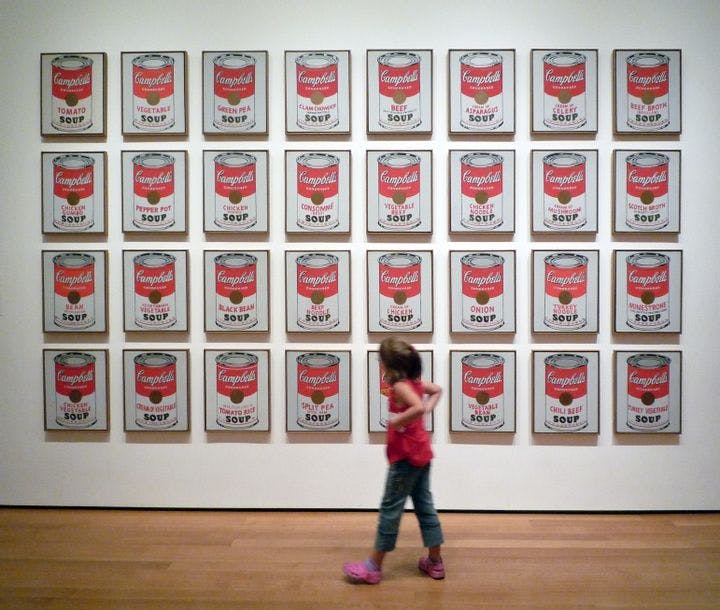Winter 2012
The Warhol Bubble
– The Wilson Quarterly
The Warhol market is experiencing a bubble that’s bound to burst.
In 1962, a 33-year-old graphic designer turned artist held his first solo show at a gallery in Los Angeles. The response was unremarkable. The gallery sold only five of the 32 paintings it displayed—each a painstaking reproduction of a Campbell’s soup can (one for each variety) for $100 apiece.
More than 30 years later, in 1996, the Museum of Modern Art in New York City bought the series for $15 million. The man behind the soup cans, Andy Warhol, had come to be seen as a contemporary artist of singular importance. Now, it looks like MoMA got a bargain; one Warhol painting, Eight Elvises, went for more than $100 million in 2008. In 2010, Warhol’s works accounted for a jaw-dropping 17 percent of contemporary art auction revenues worldwide.
Warhol partisans argue that the oeuvre of the controversial artist, who died in 1987, is worth all that cash. Warhol’s “ravishing visual cornucopia” inspired some of today’s most important artists, such as Jeff Koons and Banksy, they point out. But arts journalist Bryan Appleyard is skeptical. He concedes that Warhol has had a tremendous influence on the contemporary art world’s movers and shakers, but believes the artist was a one-trick pony. The Warhol market is experiencing a bubble that’s bound to burst.
People usually look to art as “a physical embodiment of wider meanings,” Appleyard writes. A pair of boots painted by Vincent van Gogh is not just footwear—it’s “a statement about a world that lies beyond the painting—the hard life and work of the peasant who wore these boots.” Even abstract expressionism, a school that included Jackson Pollack and Mark Rothko and came into vogue after World War II, prized meaning. It just overturned the expectation that artists had to convey it through figurative representation.
Warhol, on the other hand, consciously resisted creating meaning with his art. He only adopted the Campbell’s soup can as a subject after he asked a friend to tell him what to paint and she suggested “the most common, everyday, instantly recognizable thing,” Appleyard relates. Intentionally or not, Warhol was building on what Marcel Duchamp had done when, in 1917, he signed a urinal and pronounced it art. Warhol challenged convention with subjects that were even more contemporary and ephemeral; in addition to Campbell’s soup cans, he painted Brillo Pads and portraits of pop icons such as Michael Jackson and Marilyn Monroe. But he never progressed beyond this gimmick, and his later paintings seem merely to ape the passion that can be seen in his early work.
Appleyard proposes that Warhol may be experiencing “a moment” in part because his unpretentious approach to art is temporarily in tune with the zeitgeist. “With the instant publication of digital pictures and videos, anybody can become a cyber-Warhol.” But he feels confident that, in time, other artists of the mid-20th century, such as Robert Rauschenberg and Jackson Pollock, will be rightfully recognized as greater talents. Warhol wanted to “make art that is beyond human,” Appleyard writes. Yet at the center of the artistic urge is a desire “to define, synthesize, and express the human condition.” For all of Warhol’s glamour, he does not do that well.
* * *
The Source: "A One-Man Market" by Bryan Appleyard, in Intelligent Life, Nov.-Dec. 2011.
Photo courtesy of Flickr/Steven Zucker
